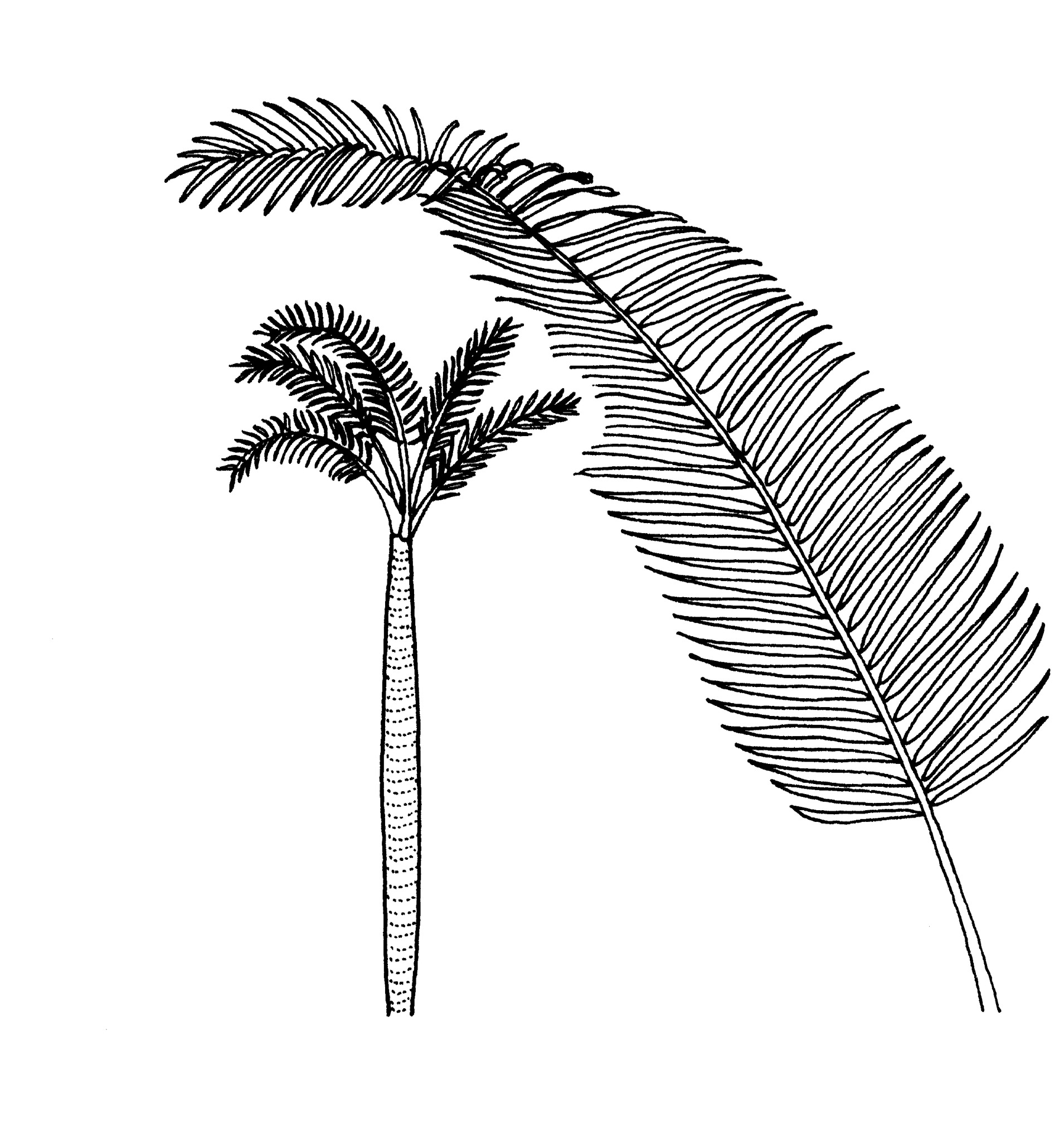
After Louis Ravene (1826–1879), French consular official.
Solitary spineless palms. Trunks sometimes swollen at the base. Crownshaft absent. Leaves feathershaped, often in a large upward-pointing crown giving the appearance of a feather duster. Leaflets regularly arranged, stiff. Flowers unisexual, the sexes on separate plants. Panicles arising among the leaves. Fruit globose or ellipsoid, yellow, orange, red, purple or black, 1-3 seeded, roundish or with a flattened side (when 2-3 seeded).
These palms occur naturally in forest and savannah with one species being a true aquatic.
Includes some desirable ornamentals.
Fresh seed takes 2-4 months to germinate.
Large solitary palms lacking a crownshaft and with a large crown of regularly feathershaped leaves; leaf stalks and midribs white-scaly (at least at first) in the only currently cultivated species.
17 species, 15 from Madagascar and 2 from the Comoros.
Dransfield & Beentje (1995).
Source: (2005). Arecaceae. In: . Horticultural Flora of South-eastern Australia. Volume 5. Flowering plants. Monocotyledons. The identification of garden and cultivated plants. University of New South Wales Press.
